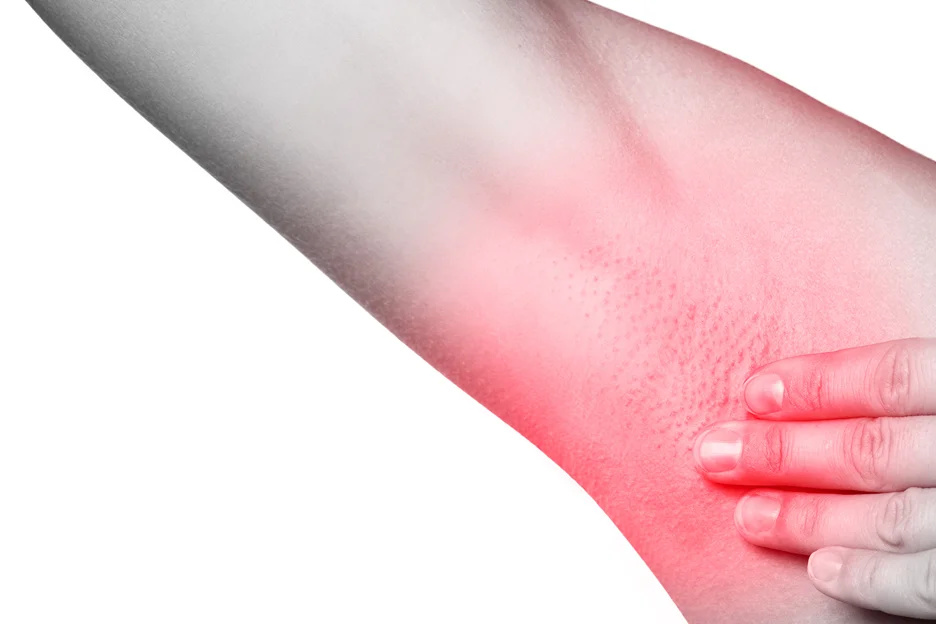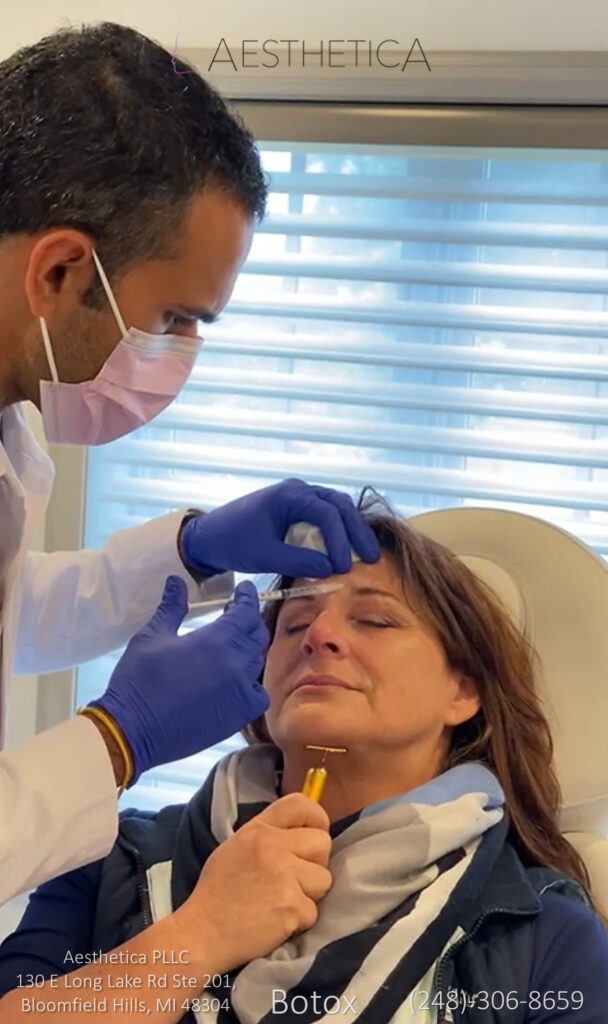
Many people suffering from hyperhidrosis receive Botox injections to treat the symptoms associated with the condition. High success and satisfaction rates are two of the reasons why most patients opt for this treatment. In order to maximize the effects of the neurotoxin, patients must take extra steps and precautions post-treatment.
So what are some aftercare tips for Botox injections used to treat hyperhidrosis? Generally, Botox injections are minimally invasive, which means that patients can return to normal activities fairly soon. Taking extra steps to care for the treated areas such as resting, avoiding activity, gentle massage, and other tips to improve recovery are recommended.
Aesthetica can assist you with all your beauty needs, helping you achieve your maximum beauty and aesthetic potential. Call or contact us today to learn more about our cosmetic services.
Caring for your Botox injections actually happens before the procedure itself. Taking the proper steps before the procedure can encourage a smooth procedure and promote good recovery afterward. Some steps to take before the procedure are the following.
Avoid shaving underarms 24 hours before the appointment. Shaving can cause micro-tears on the skin that cause irritation. The body will work extra hard to heal the irritation, and if the Botox is introduced to the skin while there is an active irritation, the patient may find the area to worsen post-procedure.
You should also avoid using deodorant 24 hours before the appointment. Deodorants contain compounds that block the pores and prevent them from releasing sweat. This can interfere with the Botox’s activity and may prevent the toxin from doing its job efficiently. Patients should just make sure to clean the area with soap and water right before leaving the house to go to the appointment.
Botox aftercare is essential for achieving the best results and preventing further complications. Since the use of Botox injection is a medical procedure, it may require some recovery time. The aim of Botox aftercare is to reduce the long-term consequences of complications such as the toxin spreading to undesired areas of the body.
Generally, patients can go back to their normal activities because Botox treatment is minimally invasive. But to avoid unwanted irritation and other side effects, continue to avoid using deodorant in the injected areas.
Patients should immediately go home after the procedure and should generally avoid exercise to prevent sweat from being produced. Sweat in the injected areas can affect the botulinum toxin from taking effect properly. Applying a cold compress can also help prevent sweat from building up in those areas. If mild pain is experienced in the injection sites, taking a pain reliever may help relieve the tenderness and pain.
Aside from what was mentioned, patients should also refrain from exerting excessive pressure on the affected areas. Pressure on the areas may damage sensitive nerves and prevent the neurotoxin from properly settling in. To prevent the poison from spreading to other parts of the face or body, avoid lying down or bending down for extended periods of time for the next 24 hours.

Botox treatment is a medical procedure, so patients should always seek medical guidance from experienced professionals. The majority of adverse effects are minor and do not require medical treatment. These adverse effects normally resolve on their own.
Botox patients rarely have side effects. It's believed to be safe, and most people tolerate it well. The following are some of the toxin's potential negative effects:
These symptoms are normally non-threatening and go away on their own. There are, however, certain major adverse effects that may need further medical attention. If the toxin travels to undesirable parts of the body, it can cause these dangerous adverse effects:
If possible, keep the injection site above heart level if possible to avoid pain flare-ups and moderate bruising. This will ensure that blood properly circulates for recovery. Constipation and nausea among botulinum toxin users can last anywhere from a few days to 2 weeks. Patients should increase their consumption of fruits, vegetables, and water, as well as take fiber supplements, to reduce symptoms.
In the first month of treatment, flu-like symptoms can appear in some patients, and these symptoms are usually mild to moderate in severity. If you have flu-like symptoms, you should rest, drink plenty of water, and treat the symptoms with over-the-counter medications. Before beginning any new drug, consult your doctor.
Using cold and warm compresses alternately can provide relief to any sore spots. It's advised to avoid drinking alcohol for a few days after a botulinum toxin injection to maintain the blood free of other toxins and pollutants. Patients experiencing any of the other adverse effects listed above should seek medical advice and instructions on how to manage them.
Having a consultation with your doctor first regarding your concern will rule out any other possible conditions. Once diagnosed with hyperhidrosis, your doctor may recommend a few treatment options, including Botox treatment. If you opt for a Botox treatment, your doctor will prepare for the procedure.
Your doctor will recommend the proper number of units and injections per injection site. The process takes around 30 to 45 minutes. It starts with cleaning and disinfecting the skin, followed by sectioning it and marking it with 1.5 to 2 cm boxes. Typically, 15 to 20 units of Botox are used for the forehead, neck, and each underarm.
After the injection has been administered, your doctor will brief you on some things to avoid after the treatment. Your provider may recommend you some over-the-counter medication if pain occurs. Make sure to keep in touch with your doctor and tell him any concerns after the procedure.
In places where perspiration occurs, antiperspirant lotions and solutions can be used. This works by stopping sweat glands from producing droplets from exiting the skin barrier. This approach only provides relief from symptoms for a brief time. These must be reapplied frequently but may cause irritation to the skin.
Another option to manage excessive sweating is the use of anticholinergics such as scopolamine and glycopyrrolate. These can be applied to the patient's skin as creams or solutions. Anticholinergics can ease symptoms for up to 3 days before requiring reapplication.
Foul order can be a result of frequent and excessive sweating. Bathing more often can reduce the buildup of bacteria that cause these odors in the areas where sweat builds up. Some tips to avoid odors are to frequently change into clean socks and shirts made of light breathable fabrics.
Lastly, meditation and other relaxation techniques might help with nervousness that leads to active sweat glands. These can aid you in learning how to manage stress levels which are known to trigger the production of sweat.
Patients can typically see a reduction in sweat produced in about 2 to 4 days after the treatment. The full effect of the treatment can be observed after 2 to 3 weeks post-procedure. The results of Botox injections for hyperhidrosis treatment last for about 9 to 12 months before needing to get follow-up injections.

Hyperhidrosis is excessive sweating due to overactive sweat glands. Botox is an effective and widely available treatment that is used to lessen the symptoms of the condition. Botox injections are minimally invasive, but taking extra steps to improve recovery is recommended. Treatment aftercare is essential to making sure that the patients achieve the desired results and that relief from symptoms lasts longer.
Aesthetica is a physician-led medical spa with the resources to address both aesthetic and medical conditions. Experts from a variety of fields can analyze and diagnose your specific concerns, as well as suggest appropriate treatment alternatives. Botox, chemical peels, dermal filler, and more procedures are available. You can contact them by clicking here.
Aesthetica can assist you with all your beauty needs, helping you achieve your maximum beauty and aesthetic potential. Call or contact us today to learn more about our cosmetic services.